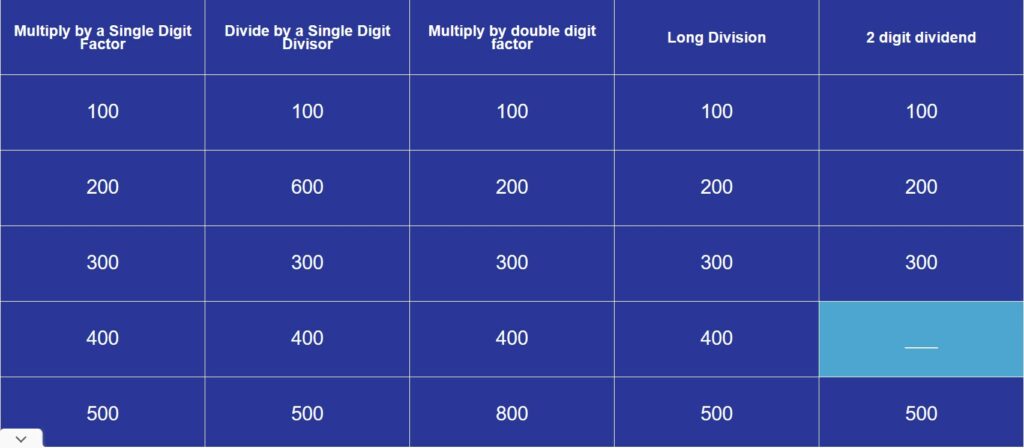Educators implement effective planning, instruction, assessment and reporting practices to create respectful, inclusive environments for student learning and development.
CREATING AN INCLUSIVE CLASSROOM COMMUNITY
During my recent practicum, I tried to be clear whenever I explained the classroom expectations to my students. I would let them know the day prior, what they were going to study and if they needed any materials to prepare for it. Ultimately, students would forget or were absent, so I still had to make arrangements. This was a lucky learning moment for me, as I soon realized that I always needed a backup plan and a few extra copies of materials available. Any projects that were not completed in class were given a specific deadline. I typically gave the class a week to do their science activities.
Example of a science activity based on adaptions:

They were color coded for ease of reference.
For Math, rather than worksheets, we practiced individually and collectively on whiteboards in class, or played games like Jeopardy. Early on, I made a custom game for practicing multiplication of integers, to practice via “thrill and drill” before giving my class a summative quiz. In that game, students pairs would race to get to the end of the number line by flipping integer chips to determine the signs, and rolling dice to determine the factors. If they got a negative number the players would jump backwards, and if they went below 0, they lost a turn and stayed at start of the game. The game was useful as students could help each other practice, and by using dice I all levels could do the calculations. By the end of the class, all students had finished the game successfully, so I knew it was time to prepare a quiz.
FORMATIVE ASSESSMENT — INTEGER JEOPARDY


Feel free to play our Integer Math based Jeopardy game by following this link:
https://www.jeopardyapp.com/play/integer-math-multiplication-and-division
The following hint guide was provided to help students master Integer multiplication. Combined with the Integer Race this helped all of my students prepare for their quiz.
INTEGER MULTIPLICATION GUIDE DOWNLOAD PDF — “Integer Race to a 100 Game”
I provided two versions of the Integer Race: One version went to a 100, and another went to 200. Students had the choice to do either one, but I recommended the first one to start. Some advanced math students finished and then played another round using the more difficult version. I was glad to have everyone engaged in their learning.
EFFECTIVE AND INCLUSIVE INSTRUCTION
One of the things I worked on this practicum was to ensure students had ample time to process and think about their responses. I always try to elicit student responses and be inclusive to the whole class. During my art class, I checked for student understanding of the word “lark” in the poem, In Flanders Fields by Canadian physician Lieutenant-Colonel John McCrae. I had no response at first, then one student who has severe learning disabilities answered, “Is it a dog?” Puzzled, I asked him, “What made you think of that?” He replied, “I don’t know but I like dogs.” I replied, “Well that was a nice try, and a lark is an animal, but it is not a dog. If we read the text closely we can see that a lark can sing and fly, “The larks, still bravely singing, fly.” After pointing this out, the class quickly understood the poem’s imagery of the birds flying overhead looking down onto the battlefield below. To be inclusive, it important to be respectful and kind whenever students are brave enough to answer. Students sometimes answer jokingly. I suspect this could be due to anxiety. Ironically, in one case during my practicum, a student’s joke ended up being the truth. He was both shocked and proud to have come up with the right answer regarding the symbolic meaning behind the colors of the Indigenous medicine wheel.
MAKING MEANINGFUL CONNECTIONS TO CONTENT
I believe that referencing real-life examples from our daily lives should be applied to teaching any subject whenever possible. Sometimes this can help students understand conceptually. In one recent example, I re-framed a math question into a possible real-world problem helping my students to easily calculate and conceptually understand the math. Students were given a “long division” question that asked them to divide 1025 by 25. I told the class to think of the divisor 25 as a 25 cents. So by re-framing the question, it was asking how many quarters do we need to make a total of 10 dollars and 25 cents? After realizing this, some students could quickly make the jump that 4 quarters equals a dollar (100 cents) and then easily calculate the final answer as 41.
FUTURE PRACTICE — One area of this standard I want to get better at is designing summative assessments. I feel confident when doing low-stake quizzes or formative activities like educational games, but I would like more practice when making and grading final unit tests. As my philosophy is to allow my students to learn to mastery, I am not comfortable with having “final” tests. I feel that if a student does poorly, the test reflects more about me, and how the students are not having their academic needs met. On the other hand, it cannot be too easy either. I was happy with the summative Math quiz I made during this current practicum as all of the students achieved proficiency or better. However, because I was a guest teacher, I did not want my quiz to weigh too heavily on their grades. While I did grade them, I let my counseling teacher determine if the results affected their ranking. As every student scored proficient or extending, I knew it was time to go on to the next part of the integer math unit and study integer division.
I have included a copy of the Integer Math Quiz / Answer Key
